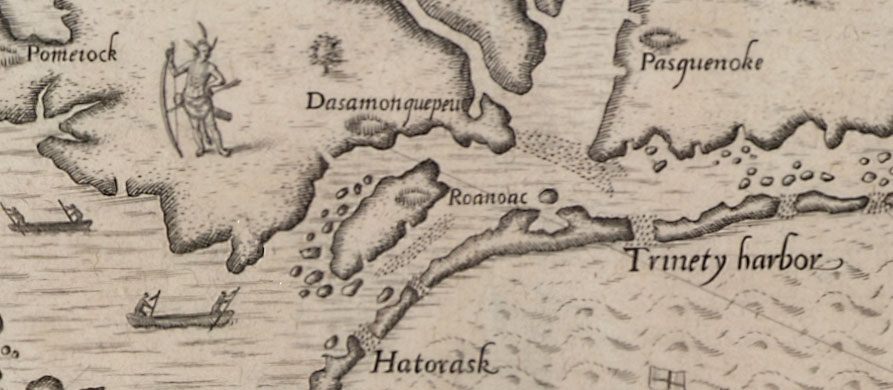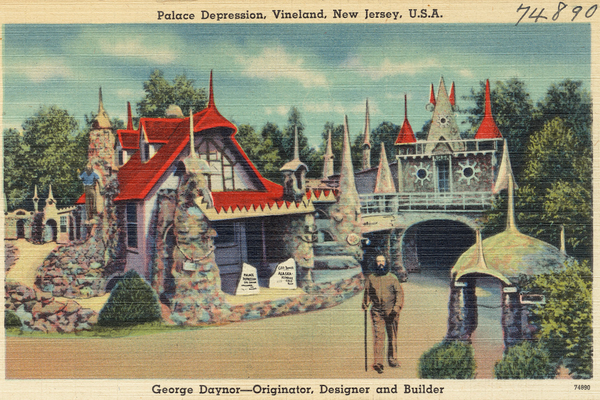FOUND: New Evidence of the Fate of the Lost Colony of Roanoke
 The Carte of Coastal Virginia (Image: Theodor de Bry/Wikimedia)
The Carte of Coastal Virginia (Image: Theodor de Bry/Wikimedia)
Since 1590, the fate of the colonists who settled on Roanoke Island, off the coast of what’s now North Carolina, has been one of America’s great mysteries. When John White left the colony in 1587, to ask England for additional aid, there were more than 100 people living on the island; when he returned three years later, they had all disappeared, leaving behind only two cryptic clues as to their whereabouts: the words “CROATOAN” and “Cro” carved in to a fence and a tree.
Now, archaeologist Nicholas M. Luccketti has found new evidence that might reveal what happened to the colonists—some of them, at least. Back in 2012, the British Museum reexamined a map that White owned and revealed that, under a patch, the map had a large blue and red X marked about 50 miles inland, at the mouth of the Chowan river. Luccketti and his colleagues have been excavating that area and, he tells the New York Times, “We have evidence from this site that strongly indicates that there were Roanoke colonists here.”
 The X on John White’s map (Image: The Trustees of the British Museum)
The X on John White’s map (Image: The Trustees of the British Museum)
That evidence, the Times reports, includes shards of Surrey-Hampshire Border ware—ceramics that were used by early colonists associated with the Virginia Company, which aimed to settle the coasts of North America. But the pottery was not brought to America after the Virginia Company dissolved in 1606, so it’s an indication of a residential settlement that started before the early 17th century.
The site at which Luccketti is working—the team calls it “Site X”—is not the only one being investigated for clues to the Roanoke colonists ultimate fate. To the southeast of Roanoke, on Hatteras Island (once called Croatoan Island), a different team of archaeologists recently found a small piece of what looks like a writing tablet and a metal hilt of sword. These add to the collection of artifacts of European origin, dated to the 16th century, found on the island in the past two decades.
Neither team’s findings have been peer reviewed yet. But one possible explanation for the two teams’ findings is that the colonists split up. As National Geographic explained a couple years ago, an earlier group of Roanoke colonists were told to split up into smaller groups if they encountered a crisis.
It’s too early, in other words, to declare the mystery solved. Even if there were Roanoke colonists at Site X, as the Times writes, “only a small number—fewer than a dozen—were present for an indeterminate amount of time.” And the question still remains: what was their ultimate fate?
Bonus finds: a white whale, a weird stash of stolen items
Every day, we highlight one newly lost or found object, curiosity or wonder. Discover something unusual or amazing? Tell us about it! Send your finds to [email protected].













Follow us on Twitter to get the latest on the world's hidden wonders.
Like us on Facebook to get the latest on the world's hidden wonders.
Follow us on Twitter Like us on Facebook